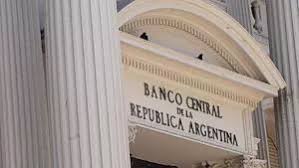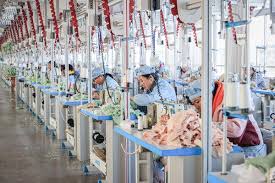President Javier Milei made the risky announcement on Friday that he will relax the majority of the nation’s stringent capital and currency controls the following week, thanks to a fresh loan from the International Monetary Fund.
In the libertarian agenda to restore Argentina’s economy following decades of unchecked expenditure, it was a significant step forward.
Late Friday, the $20 billion rescue package was approved by the IMF’s executive board.
It provides a lifeline to Argentina’s rapidly declining foreign exchange reserves for the next four years.
President Milei’s strict austerity program and zero-deficit fiscal policy were commended by the fund, which stated that the program aimed to “consolidate impressive initial gains” and address “remaining macroeconomic vulnerabilities.”
Argentina has pledged to double down on spending cuts and economic deregulation as well as move toward a new foreign exchange regime, according to IMF Managing Director Kristalina Georgieva.
“Against this backdrop, the authorities are embarking on a new phase of their stabilization plan,” Georgieva said.
Milei spoke on television shortly afterward, accompanied by his ministers.
“Today, for the first time, we are starting to move forward and are ending the cycle of disillusionment and disenchantment,” he stated.
“We have permanently removed the Argentine economy’s exchange rate controls.”
A maze of rules:
The capital controls, sometimes referred to as “el cepo” or “the clamp,” are a complex system of laws designed to keep the peso stable at the official exchange rate and stop capital flight from Argentina.
The limits, which were put in place by a previous administration in 2019, impede people’s and businesses’ access to dollars and deter foreign investment, which is necessary for Milei to realize his vision of a free economy in Argentina, which is currently severely regulated.
Due to the restrictions, it became nearly impossible for regular Argentines to buy dollars, which led to the emergence of a black market where practically all Argentines sell their depreciating pesos despite the fact that it is illegal. On Monday, they will be removed.
“The program is unprecedented in supporting an economic plan that has already yielded results,” Milei said, adding that the bank would receive the first $12 billion from the IMF on Tuesday.
This larger-than-expected upfront sum gives Argentina’s reserves breathing room to make the significant change and reflects the fund’s confidence in Milei’s radical reforms.
Letting the Argentine peso float—sort of The new policy also entails removing the peso’s peg to the dollar, but instead of that risky free float, Argentina is allowing the peso to trade within a so-called currency band that spans from 1,000 to 1,400 pesos per dollar.
The band will grow by 1% every month, according to the bank.
This is a departure from Milei’s previous policy of letting the peso depreciate at a rate of 1% per month against the dollar.
Investors were concerned about the central bank depleting its reserves to support the peso, and in the last few weeks, the bank had to spend $2.5 billion defending the official exchange rate.
Luis Caputo, the minister of economy, argued that the lifting of exchange controls was “not a devaluation” when he announced it.
“The fact is, we have no idea where the dollar will go,” he stated.
The goal of Milei’s team has been to prevent a politically damaging official devaluation of the peso that might significantly increase inflation.
The political outsider has maintained his popularity ratings by keeping growing prices under control, which was a key campaign pledge.
This is in spite of his harsh cuts to state spending that could otherwise lead to social upheaval.
However, it was evident that the peso would need to depreciate somewhat, with analysts predicting that it would drop to near its black-market rate, which was 1,375 pesos to the dollar on Friday compared to the official exchange rate of 1,097 pesos.
According to Marcelo J. García, director for the Americas at the geopolitical risk consultancy Horizon Engage, based in New York, he anticipated an initial devaluation of about 20–25%.
“Inflation in the second quarter of the year is a big question mark. It’s very likely there will be a shock,” Leonardo Piazza, chief economist at Argentine consulting firm LP Consulting.
Argentina has a history of defaulting.
The previous left-wing Peronist government had accumulated enormous budget deficits before Milei’s inauguration in December 2023, which resulted in extremely high inflation and a persistently declining value of the peso.
Milei has produced Argentina’s first fiscal surplus in nearly 20 years, eliminated price controls and subsidies, fired tens of thousands of state employees, and stopped the central bank from printing pesos to pay government bills.
He has also largely stabilized Argentina’s macroeconomic imbalances, which has excited markets even as his reforms have a significant negative impact on the populace.
There have been few indications of a sustainable recovery, despite all the changes and financial suffering.
According to analysts, a long-term economic recovery entails lifting capital controls, building up currency reserves, and gaining access to international capital markets.
As a result, foreign investors have refrained from investing in a nation notorious for defaulting on its debt, and this new $20 billion loan is the 23rd rescue package in the country’s lengthy and turbulent history.
The South American country is already the IMF’s largest debtor, owing about $43 billion.
An “outpouring of money”
Over the past year, Milei has resisted investor demand to relax capital limits, arguing that the correct economic climate was required. It was time at last, he said.
According to the fund, Argentina’s central bank would receive an additional $2 billion in the next two months following the initial $12 billion IMF payout.
The Inter-American Development Bank announced later Friday that $10 billion will be distributed over the next three years, and other international organizations will also contribute.
“We can support all of the pesos that are currently in our economy with this level of reserves, giving our citizens financial security,” Milei stated. “These serve as the cornerstones of long-term, steady growth.”
Eliminating the “cepo” might release years of stifled demand for US dollars and cause a currency run as businesses attempt to repatriate their long-trapped riches home, making it a risky enterprise.
According to Christopher Ecclestone, a strategist at the investment bank Hallgarten & Company, “It could be a tsunami of money out.” “There is a lot of guesswork involved in predicting what people will do.”
The central bank stated that it would keep some limitations on businesses and levies on international card purchases even as it lifted limits for the general public.
For example, multinational corporations will be permitted to repatriate their profits starting in 2025.
However, they will have to convert the debt into security bonds denominated in dollars to get their already stranded holdings out of the country.
It is an attempt to protect against capital flight, which would jeopardize Milei’s main achievement of bringing inflation down before the October midterm elections, which are essential for his libertarian party to increase its meager legislative minority.
“The announcement is bolder than anticipated.” By lifting the cepo, the government is taking a bit of a risk,” García remarked.
Analysts believe it’s also a daring move given the local market turbulence caused by tariffs imposed by US President Donald Trump.
Laptops 1000Argentina’s stocks and bonds have fallen sharply in recent days.
In the meantime, the closely monitored difference between Argentina’s currency exchange rates has increased by more than 20% in recent weeks as traders worry about potential peso devaluation under Argentina’s IMF pact.
The disparity can contribute to inflation, which surged to its highest level in seven months in March and is a crucial gauge of public trust in the government.
Argentina’s National Statistics Institute said Friday that, mostly due to rising food prices, consumer prices increased 3.7% last month compared to 2.4% in February.
Mieli remained calm. “Inflation will go away,” he said.

















